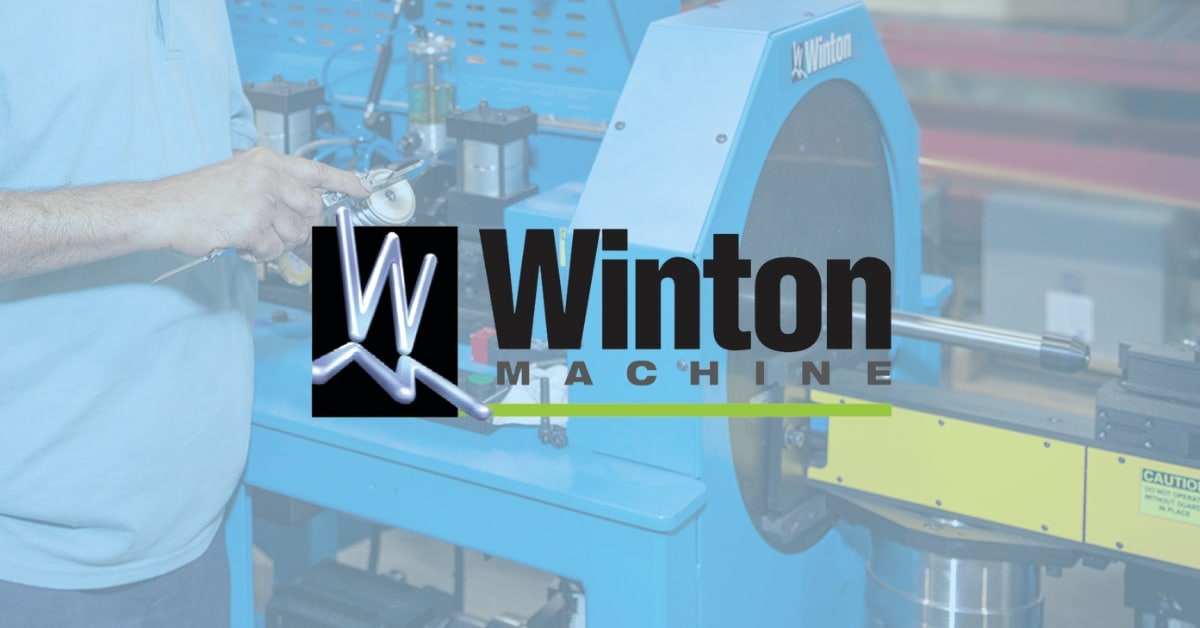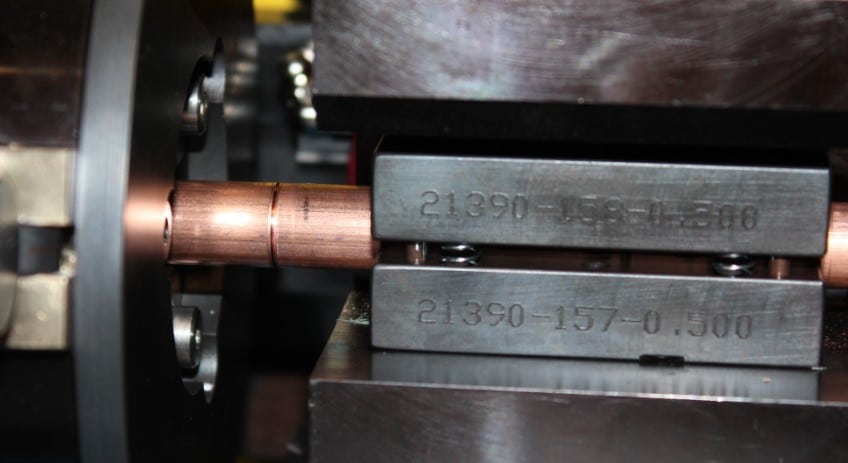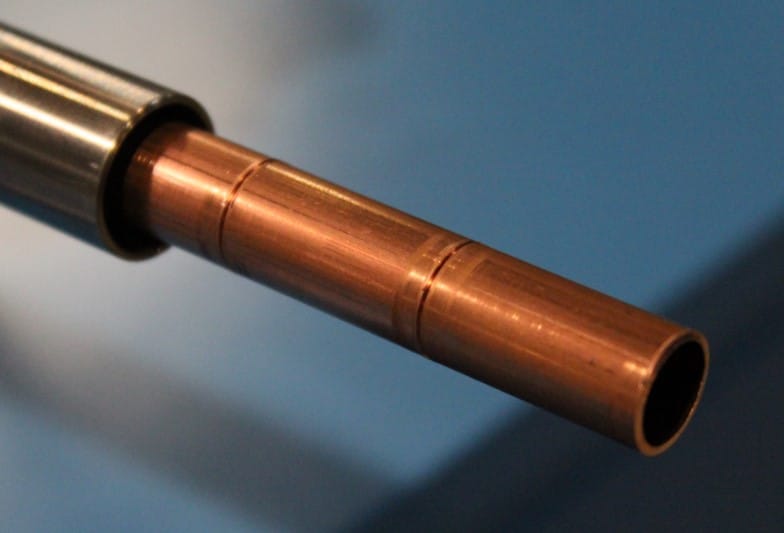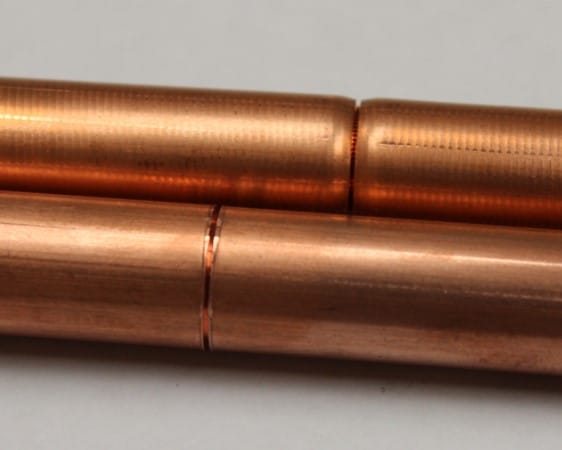How a Depth Type Cut Can Expand the Capacity of your Existing Cutoff Machine
Almost…But Not All The Way
Most chipless type cutoff machines have a limit as to how short of a part they can cutoff. Often on these types of machines a pull apart type cut is used to help aid the cutting process. A pull apart type cut is where you put the tube in tension while a rotating cutter works is way thru the round material. The tension is produced by pulling the tube between a static clamp and a dynamic clamp. Once the rotating cutter is almost all the way thru the tube, the tension within the cut zone causes the remaining thin ring of material to rupture (fail) and thus completing the cut.
This process works well when your cut length is long enough to span both clamps. Depending on the design of the machine, a typical minimum length that can be pulled apart might be in the range of 10” to 18”. Anything less would pose a problem for the pull apart process.
So as you can imagine there must be an infinite number of parts in the world that can’t be made using a typical pull apart process. This is where a depth type cut comes into play. With a small process change your chipless cutoff machine should be able to cut to a depth leaving a very thin ring of material remaining as the cutter retracts.
A depth type cut is shown in Figure 1 below. Figure 1 shows two depth cuts in a single piece of copper. The cut lengths can be removed one of two ways.
Figure 1 shows two back to back cuts in a single piece of ½” diameter copper. The depth cut process can produce very short parts.
The first technique involves a powered device (not shown) mounted somewhere above the partially cut tubing. When the powered device (often an air cylinder) extends into the tubing, it causes the remaining thin ring of material to break off. The second techniques is to allow the partial cut parts to exit the machine whereby an operator is waiting to efficiently separate a series of soon to be divorced parts.
A depth type cut does not come without its drawbacks. See Figure 2. In Figure 2 a depth cut was imparted on both tubes. The difference between the tubes is the temper of the copper. The cut on the left was imparted on a harder tube. The cut on the right was imparted in a softer copper. You can see in the picture how the cutter rolled in both sides of the cut when parting the softer material.
Figure 2 above shows 2 cuts. One is soft piece of copper and one in a harder piece of copper. Can you guess which is which?
The amount of material rolled in can to an extent be controlled by throttling back the rate at which the cutter advances inward to make the cut.

George Winton, P.E. designs and builds CNC tube fabrication equipment for Winton Machine in Suwanee, GA. He can be reached at gwinton@wintonmachine.com or 888.321.1499.
About the Machines We Build
All of our semi-rigid coax and tube fabrication machines at Winton are designed, manufactured, and tested in-house. We have a large line of standard products as well as the ability to engineer the best solution for our customer’s needs. Our experienced sales staff makes sure that our customers can justify their capital equipment investment by offering a solution that is exactly what they need in order to manufacture their parts. Please contact us today to discuss your project.





